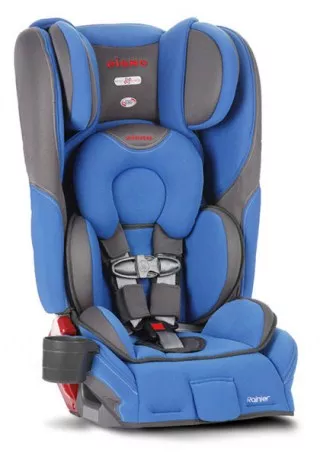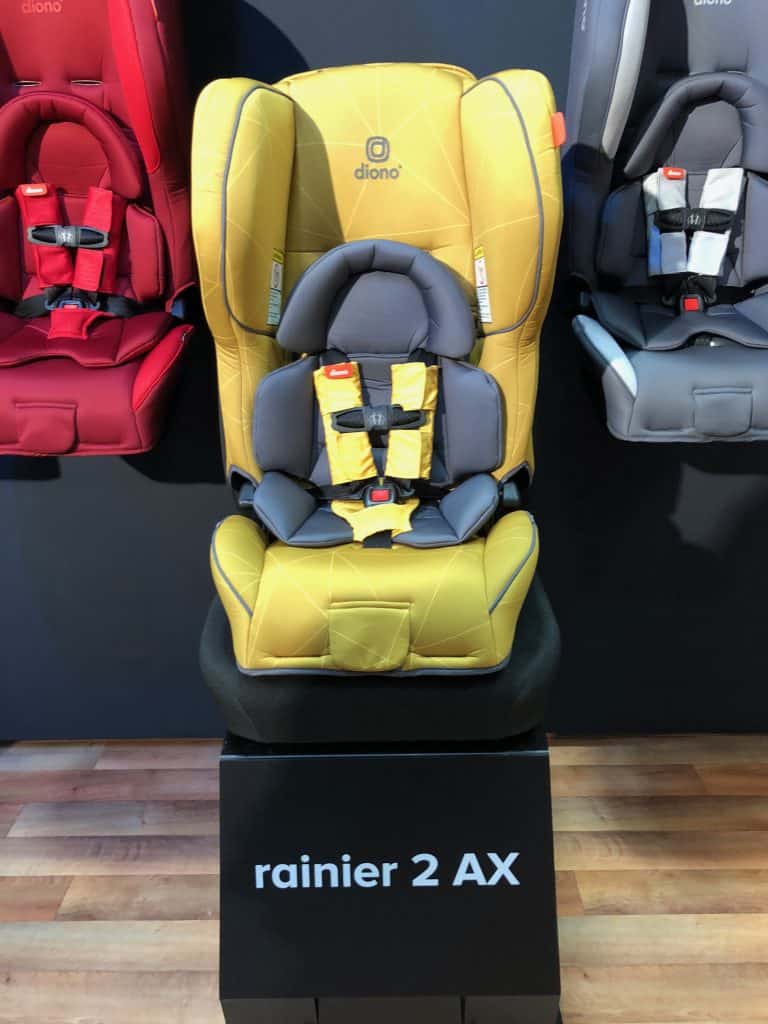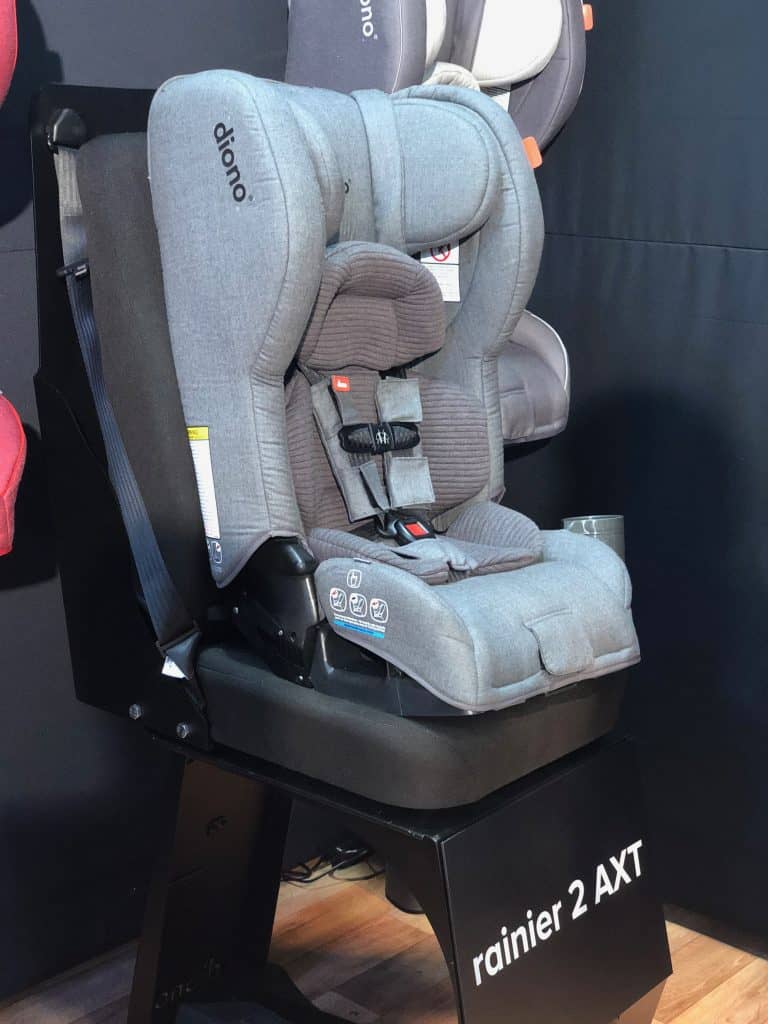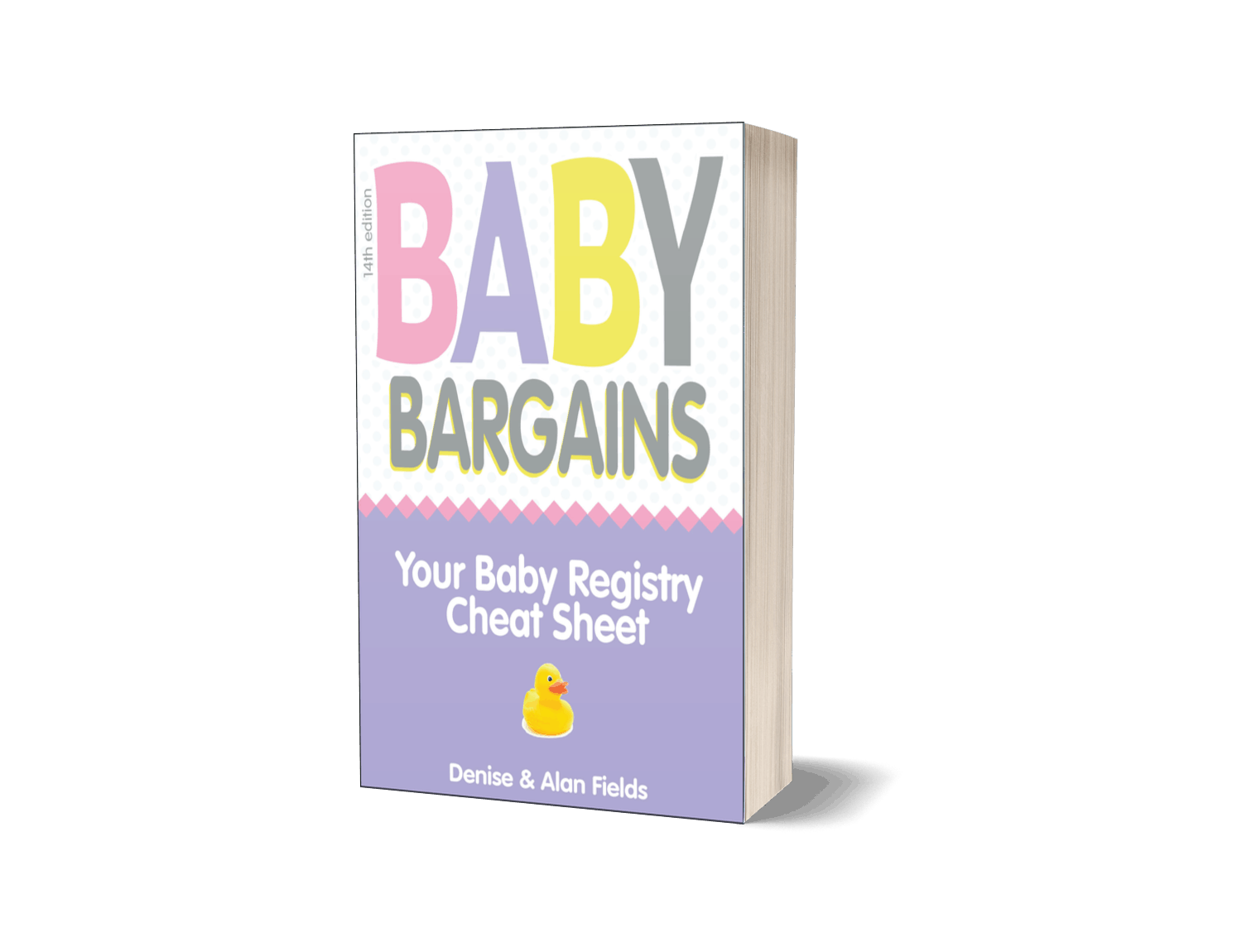Last updated:
 Price: $300
Price: $300
Type: Convertible to belt-positioning booster
Limits: 5-50 lbs. rear-facing, 20-65 lbs. front-facing, 50-120 lbs. as a booster.
NHTSA ease of use rating: Two out of five stars (rear and forward facing modes). One out of five stars in booster mode.
Comments: The Diono Rainer is a revised version of the Radian 3RXT and is Diono’s top-of-the-line model. The Rainier has a few enhancements over the RXT, chief among these slightly higher rear-facing weigh limits (50 for the Rainer, 45 for the 3RXT).
The Rainier has added side impact protection (compression walls at the head area, a rigid double wall structure on the sides) and upgraded fabrics (called Silk Tech) that are wipeable and wick for comfort in hotter temperatures. The added side impact protection doesn’t add to the seat’s width, a plus.
The current line up for the Rainer are the 2 AX ($350) and 2 AXT ($400). The big difference between the two: the 2 AX does not have a booster mode; the 2 AXT does (50-120 lbs) as well as Merino wool covers, which are naturally flame-retardant (and appear on the UPPA baby Mesa infant car seat, for example).
Here’s a look at the new 2018 Rainier 2 AX. Note the wider top:
And the new Rainier 2 AXT with the wool cover:
Like many of the Diono seats, reader feedback has trended bi-polar in the past year. Fans love the seat’s narrow width (allowing for three across seating) and added comfort (the memory foam in the seat, for example). The infant insert means enables a better fit for newborns. The fabric also comes in for kudos—parents in hot climates say the Rainer’s fabric remains cool despite summer heat. The high 50 lb. rear-facing limit also earns huzzahs.
Detractors cite difficulty in trying to install the seat rear-facing—lack of a tight fit, the tall back of the seat blocking a vehicle’s rear-view mirror. And this seat’s high weight limits come with a major caveat when using LATCH: rear-facing, you can only use it to 35 lbs. rear-facing, forward to 40 lbs (with vehicles made after 2014). To get the higher limit, you must use a seat belt installation . . . and then deal with the issues that crop up with the Rainer in rear-facing mode.
Also: Rainer does not have a no-rethread harness—yep, that means you’ll be rethreading the harness to change the height. For a $300 seat, that is a glaring omission.
Another negative: the Rainer’s epic fail at the NHTSA ease of use ratings—a measly two out of five stars for rear and forward facing modes. An abysmal one out of five stars in booster mode. Poor instructions and labels (poor routing labels, the lack of pictures of a properly restrained child are examples) contributed to the low ratings. Another negative: you must remove the harness when converting to booster mode, but there is no place to store the harness in/on the seat. That means it could be misplaced, a bummer when you planned to use it for a second child.
As we noted in our review of the Diono Radian, these seats have various installation modes and features—that complexity contributes to these seats poor ease of use ratings. Rear-facing installs can be particularly vexing.
Meanwhile, the Insurance Institute of Highway Safety gives this seat a “good bet” rating for its booster mode.
So, it is a mixed bag for the Rainer. We gave this seat an A last time out, but are lowering the rating now to reflect reader feedback regarding installation and ease of use. The Rainier is a good solution for folks who need to fit three seats across in a back seat, given its narrow width. And this seat is great at fitting super-size toddlers. But for everyone else, there are are better options out there.
Our Rating: B



 We obsess over gear for families . . . so you don't have to. Baby Bargains has one mission: help you find the best gear for your family and home with unbiased reviews by experts with 20 years of experience. At prices that don't break the bank. When you purchase a product from links on this site, we make a small affiliate commission. Learn more
We obsess over gear for families . . . so you don't have to. Baby Bargains has one mission: help you find the best gear for your family and home with unbiased reviews by experts with 20 years of experience. At prices that don't break the bank. When you purchase a product from links on this site, we make a small affiliate commission. Learn more 

When do you expect to have a rating / review update? I believe these have been on the market for a couple months now. Thanks!